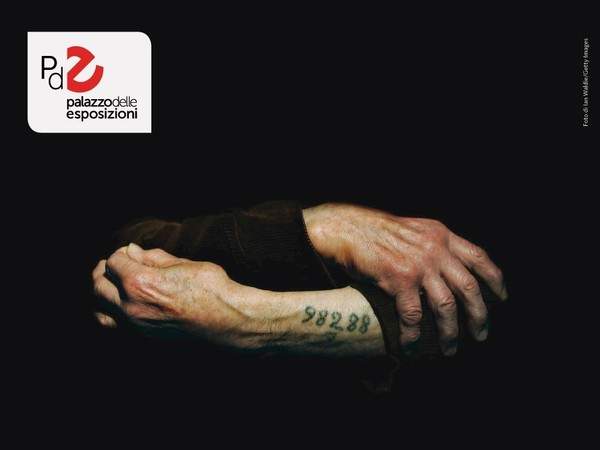Remembering and telling Auschwitz: Studio Azzurro's experiential exhibition together with Roman high school students
Following a Journey of Remembrance to Auschwitz, the epicenter of the Shoah that shook the 20th century, a group of male and female students from some Roman high schools began to imagine a different way of remembering those terrible events. From the meeting of these boys and girls with Studio Azzurro, a collective of Italian artists investigating the language of new media, Witnesses of Witnesses was born. Remembering and Telling Auschwitz, the first experiential exhibition conceived by students in an institutional space in the capital (the Palazzo delle Esposizioni), to be experienced as an invitation to take a physical and mental journey to keep the memory of history burning.
The exhibition’s path guides us through this experience, creating a link between witnesses and future generations.
Groups of people, families of Jewish origin, still united, watch us from a large mosaic of photographs at the entrance to the exhibition. A confined space, into which the visitor is invited to enter, evokes the deportation wagon. The doors close. In the darkness, the voices of Mussolini and Hitler, the exalted cheering of the crowds, the pressing rhythm of the train.
The doors open again, other faces observe us, those of those who had already crossed the threshold of the death camps. A projection shows the structure of the Auschwitz camp, where not only Jews were deported, but also political prisoners, opponents, Sinti, Roma, homosexuals. Large walls of portraits hide the stories trapped in the camps and in the meandering memories of those who saw and lived. Large faces of deportees look at us, question us, ask us to remember and to tell. Pulling our ears close to the walls we hear the voices and stories of survivors, of those who have taken it upon themselves to tell us today. They are some of the witnesses who returned to Auschwitz to accompany the younger ones. They are those who want to entrust their memory to new witnesses.
Three screens welcome the faces of the students who conceived and wanted this path and who, with their stories, begin this new, yet so primary, form of memory. The path continues with three in-depth studies. One devoted to the design of the “extermination machine” and the planning of scientific experiments. One to the babel of language, the “Lagersprache,” the language used to survive in a place where not understanding each other and not understanding could mean being shot instantly. One to the attempt to recover the countless identities recorded as serial numbers. In this room, it is up to the visitor, approaching the monitors, to resurface the lost identity of the prisoners.
The exhibition opens from Jan. 26 to March 31 with free admission on Jan. 27 on Memorial Day.
For all information you can visit the official website of the Palazzo delle Esposizioni.
 |
| Remembering and telling Auschwitz: Studio Azzurro's experiential exhibition together with Roman high school students |
Warning: the translation into English of the original Italian article was created using automatic tools. We undertake to review all articles, but we do not guarantee the total absence of inaccuracies in the translation due to the program. You can find the original by clicking on the ITA button. If you find any mistake,please contact us.





























